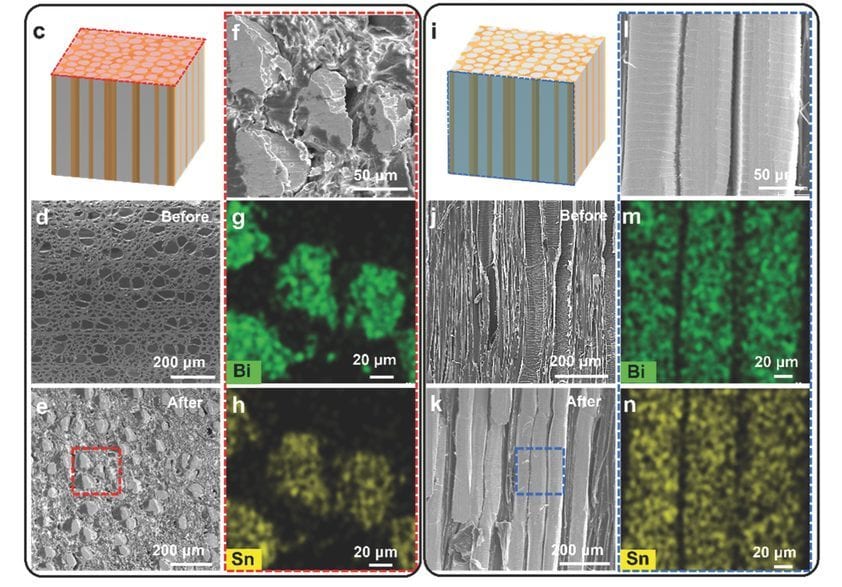Biomaterials with unusual microstructures can be found in nature, with many possessing anisotropic, and even directional physical and chemical properties. Inspired by nature, many rationally designed artificial composite materials can offer enhanced functionalities that single materials cannot match.

Microstructures of anisotropic metallic wood. See more information here.
While random and uniformly mixed materials have been studied, and have been show to lead to favorable, isotropic properties, the rational design of composite materials can lead to properties that are even more remarkable. Many types of hierarchical structure can be seen in nature, such as “brick and mortar” in nacres, aligned prisms for example in enamel, and surface structures in spider silk and cacti. Using the inspiration of nature, many materials can be rationally designed and fabricated with different functionalities providing anisotropic electrical, thermal, optical, mechanical, and ionic properties.
However, the anisotropic factors of composites made from bottom-up methods have been employed to synthesis composites; however, the anisotropic nature of these composites are usually limited, since the filler materials (such as nanowires and nanoplatelets) do not form a continuous carrier pathway in the direction of alignment. Moreover, fabrication processes can be complicated and the raw materials can be expensive in the synthesis of hierarchical composites, limiting scale up. Rational design and better selection of materials is required to optimize the performance of hierarchical composites.
Recently published research from researchers at the University of Maryland presents the design and fabrication of a metallic wood composite. This composite possessed highly anisotropic electrical and thermal conductivities. The ultrahigh anisotropic ratio value far exceeds the values from composite materials reported in literature to date.
The metallic wood demonstrated enhanced mechanical strength compared with natural basswood, which is more advantageous for practical applications. The fabrication of the metallic wood is facile and easy to scale up for large-scale applications.
Read more about this research in Advanced Materials.
















